Don’t miss...
Don’t miss...
The Palace and the Estate cover a wide expanse of land. Choose a location close to what you want to visit first.
Small Stables
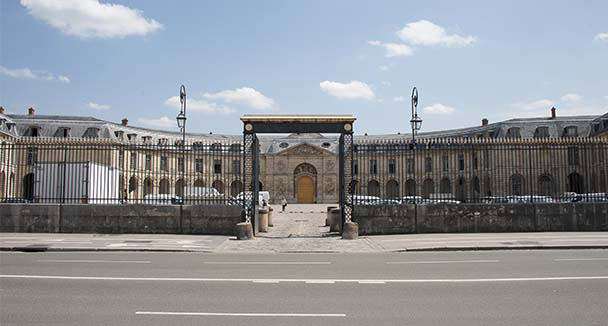
The Coach Gallery
The Coach Gallery has been housed in one of the Main Stables galleries since 1985. There you can see the gala carriages commissioned for Napoleon's wedding, Louis XVIII's funeral carriage, Charles X's coronation carriage, other carriages from the 3rd Republic and sleds and sedan chairs from the 18th century.
Free access
From 1 April to 31 October:
Open on Saturdays, Sundays and public holidays (excluding Mondays) and from Tuesday to Sunday during zone C school holidays (from Tuesday 9 April to Sunday 21 April).
Opening times: 12.30pm - 6.30pm
Last admission: 5.45pm
From 2 July to 29 September, the gallery is open from Tuesday to Sunday, 9am to 6.30pm (last admission 5.45pm).
From 1 November to 31 March:
Open on Saturdays and Sundays
Opening times: 12.30pm - 5.30pm
Last admission: 4.45pm
Closed on 25 December 2024 and 1 January 2025
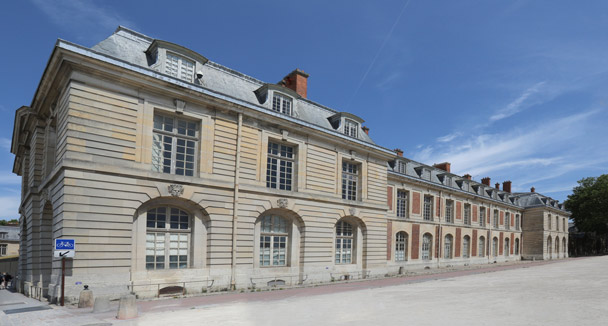
Sculpture And Plaster Cast Gallery
The gallery houses both the Louvre's plaster collection (a collection of castings taken from Antiquity) and marble sculptures from the garden of the Palace of Versailles, to protect them from the erosion they would be subject to if they were exhibited outdoors.
Access: Free
From 1 April to 31 October, the gallery is open every Saturday, Sunday and public holiday (except Mondays) from 12.30pm to 6.30pm (last admission 5.45pm).
From 2 July to 29th September, the gallery is open Tuesday to Sunday, 9 am. to 6.30 pm (last admission 5.45pm).
Closed from 1 November to 31 March.
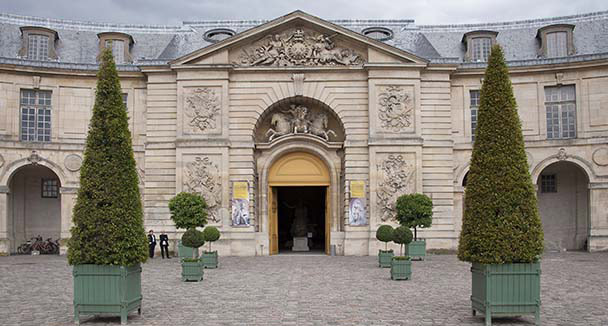
The Great Stables

Pièce D'EAu Des Suisses
Intended to add beauty to the South aspect of the palace, as an extension of the Orangerie, it also allowed to dry up the land intended for the Potager du Roi (Kitchen Garden of the King) created at the same time.
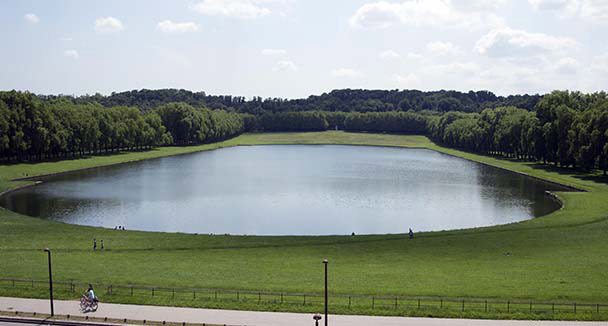
Salle Du Jeu De Paume
The Jeu de Paume Room at Versailles was built in 1686 to satisfy the court ('jeu de paume' was a historic precursor of tennis). It was the venue for the Jeu de Paume Oath, taken on 20 June 1789.
It is open to the public every weekend from May to October from 12:30 to 18:30 (last access 17:45).
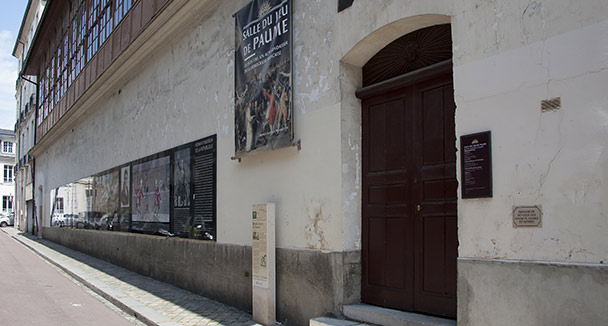
Potager Du Roi
The King's Vegetable Garden was built between 1678 and 1683 by Jean-Baptiste La Quintinie, on request from Louis XIV. Open to visitors, it also houses the National School of Landscape Architecture.
Classified as a historic monument and garden of exception, the gardeners maintain the tradition of topiary and cultivate a wide range of fruits and vegetables in this French style garden.
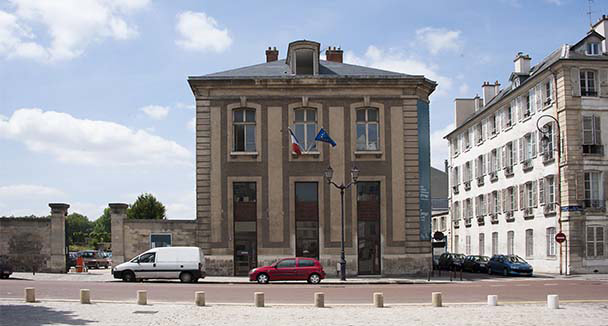
Neptune Fountain
Construction of the Neptune Fountain took place between 1679 and 1681, under the supervision of Le Nôtre. At that time, it was referred to as the "water feature beneath the Dragon" or the "Pines feature". Ange-Jacques Gabriel modified the outlines slightly in 1736, and 1740 saw the sculpted decorations set in place. The new fountain, inaugurated by Louis XV, contains ninety nine water jets and effects.
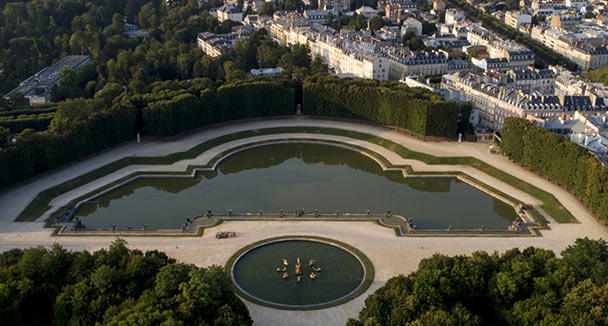
Orangery Garden
At the foot of the Palace, the Orangery is one of the best examples of Jules Hardouin-Mansart's great talent as an architect, due to its size, its height and the purity of its alignments. Orange trees from Portugal, Spain and Italy and lemon and pomegranate trees. Some of the trees are over 200 years old. During winter, pink laurels and palm trees are kept there.
Visitors cannot enter the Orangerie without a guide.
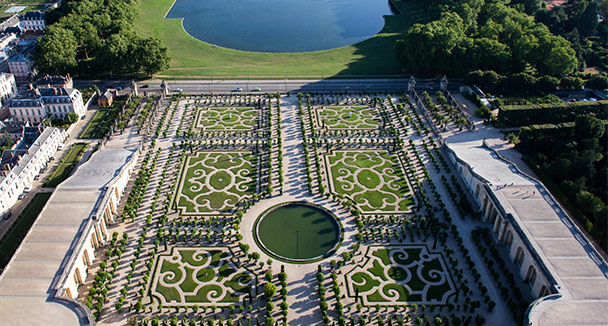
Latona's Fountain
Taking its inspiration from Ovid's 'Metamorphoses', Latona's Fountain illustrates the legend of Latona, protecting her children Apollo and Diana. The central group was sculpted in marble by the Marsy brothers and represents Latona and her children. The statues were originally set on a rock, in 1670.
The jewel in the crown among the garden's fountains, discover the restored Latona fountain and parterres.
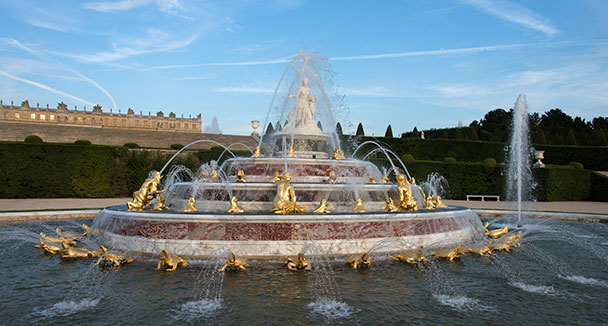
Petit Trianon
Madame de Pompadour, who wished to “relieve the king’s boredom”, was the instigator of this small palace built by Ange-Jacques Gabriel between 1763 and 1768, close to the botanical gardens and the new menagerie. To please the Marquise who was always at the height of fashion, the architect abandoned the "rocaille" style and adopted a cubist form with straight lines in accordance with the latest "Greek style" architectural trend.
Only the garden level of the Petit Trianon is accessible to disabled visitors.
Open from midday to 6.30pm during high season (April to October) and from midday to 5.30pm during low season (November to March). In July and August, it opens exceptionally at 10am from Tuesday to Sunday. Gardens open until 7.30pm during high season and until 6 during low season.
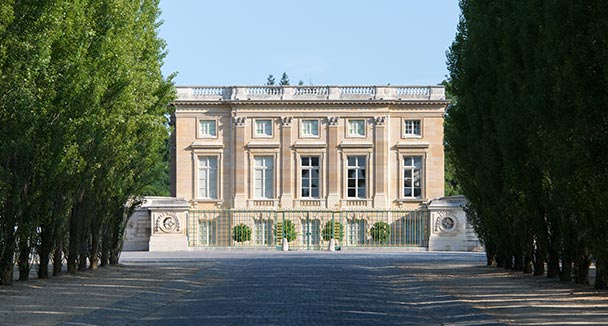
The Grand Trianon
The Grand Trianon is located 25 minutes' walk to the north west of the Palace of Versailles, built on the grounds of a village acquired by the sovereign. Unique in its original style of architecture, it was the work of Jules Hardouin-Mansart and the King himself, as Louis XIV was greatly involved in its creation in 1687. At that time, Versailles had been overrun by crowds of courtesans. The Trianon was intended as a private retreat.
Open from midday to 6.30pm during high season (April to October) and from midday to 5.30pm during low season (November to March). In July and August, it opens exceptionally at 10am from Tuesday to Sunday.Gardens open until 7.30pm during high season and until 6pm during low season.
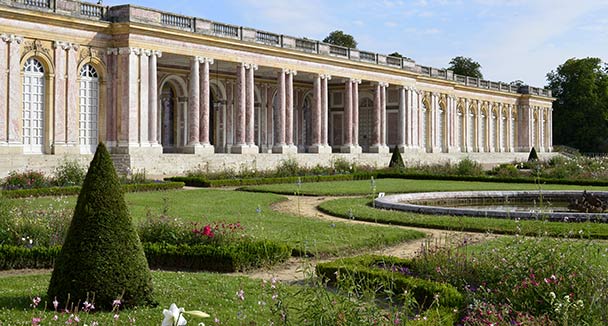
The Grand Canal
The Grand Canal is André Le Nôtre's most original design. Covering 23 hectares, 60m in width, 1700m east-west and 1000m north-south in length, the Grand Canal is one of the best places to take in the full beauty and grandeur of the estate as a whole. Laid out between 1668 and 1679, Louis XIV's architect took great care over the dimensions in order to offer the perfect perspective.
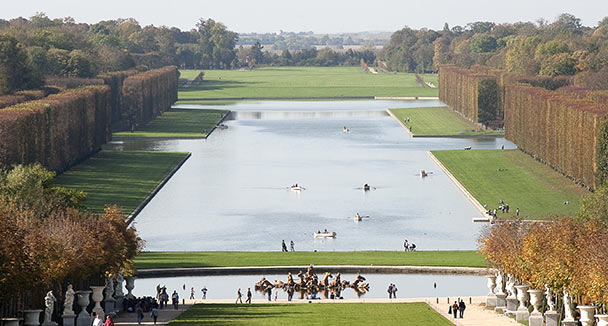
Gallery Of The History Of The Palace
With the main Palace, the Trianon palaces, the gardens and the park, Versailles is a site whose topography and history are rich. Located at the beginning of the Grand Apartments tour, the Gallery of the History of the Palace is an essential introduction to the visit.
Under the Ancien Régime, these rooms were the apartments of the royal princes, before Louis-Philippe transformed them to present a brief history of France through works ranging from the Baptism of Clovis to Louis XVI giving La Pérouse his instructions.
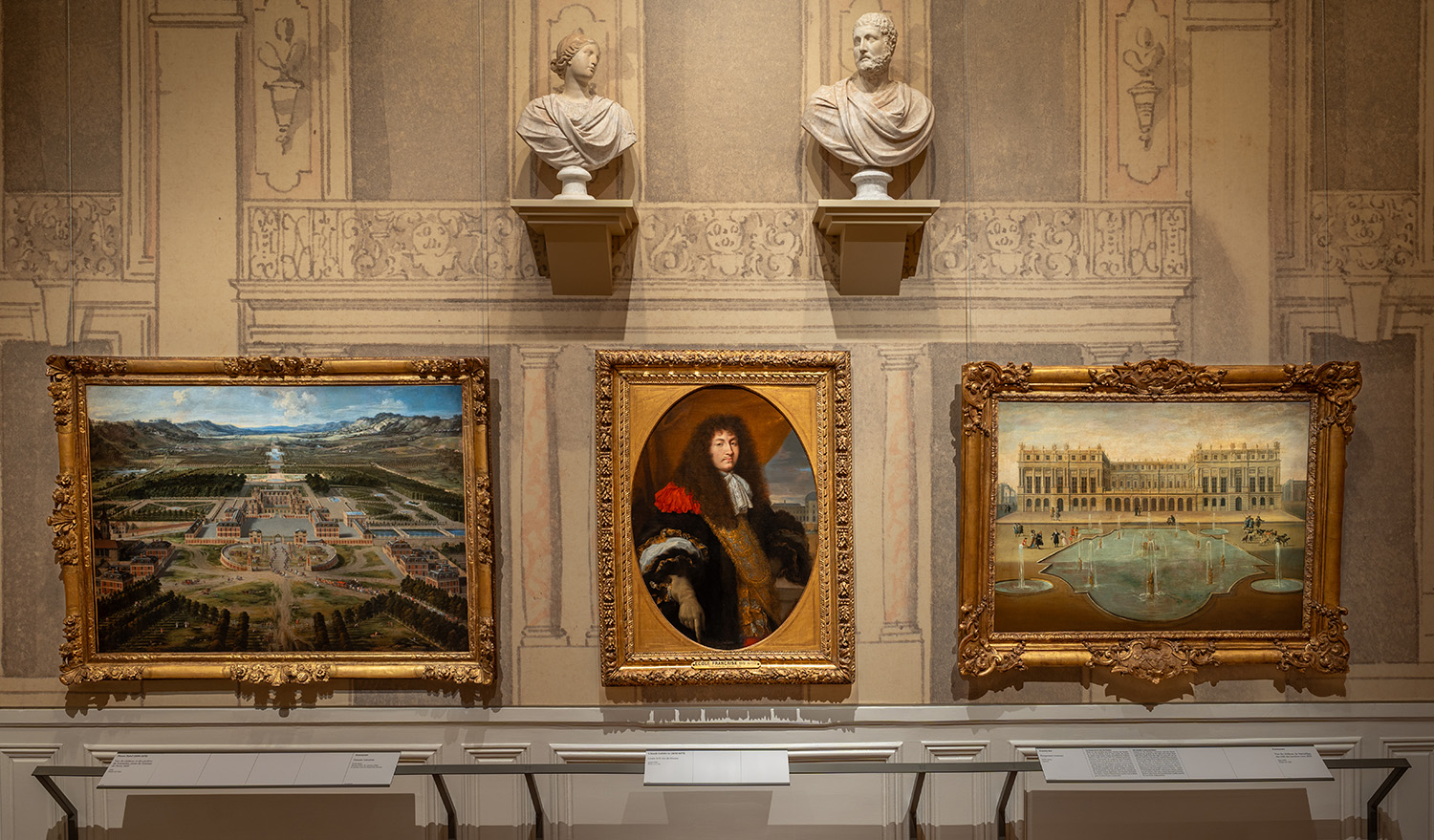
The Mesdames’ Apartments, Daughters Of Louis Xv
The Mesdames' apartments are symmetrical to the apartments of the Dauphin and Dauphine. Like them, they were turned into museum rooms by Louis-Philippe and recently restored to their state of princely apartments. Mesdames, as the six daughters of Louis XV were referred to, settled there in 1752, but only two of them, Adelaide and Victoire, lived there until the Revolution.
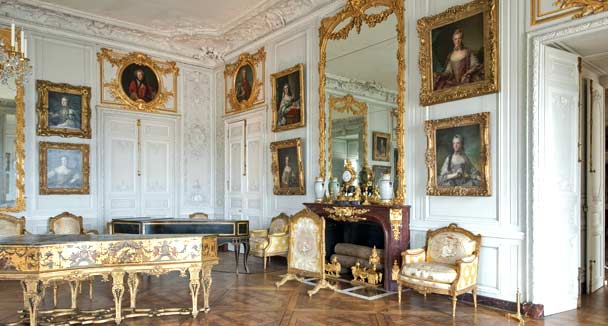
Grand Apartments (Hall Of Mirrors, King’s Chamber)
Visitors arrive at the Grand Apartments through the Gallery of the History of the Palace or the sculpture gallery. By taking this tour, visitors can explore the apartments of the King and Queen of France.
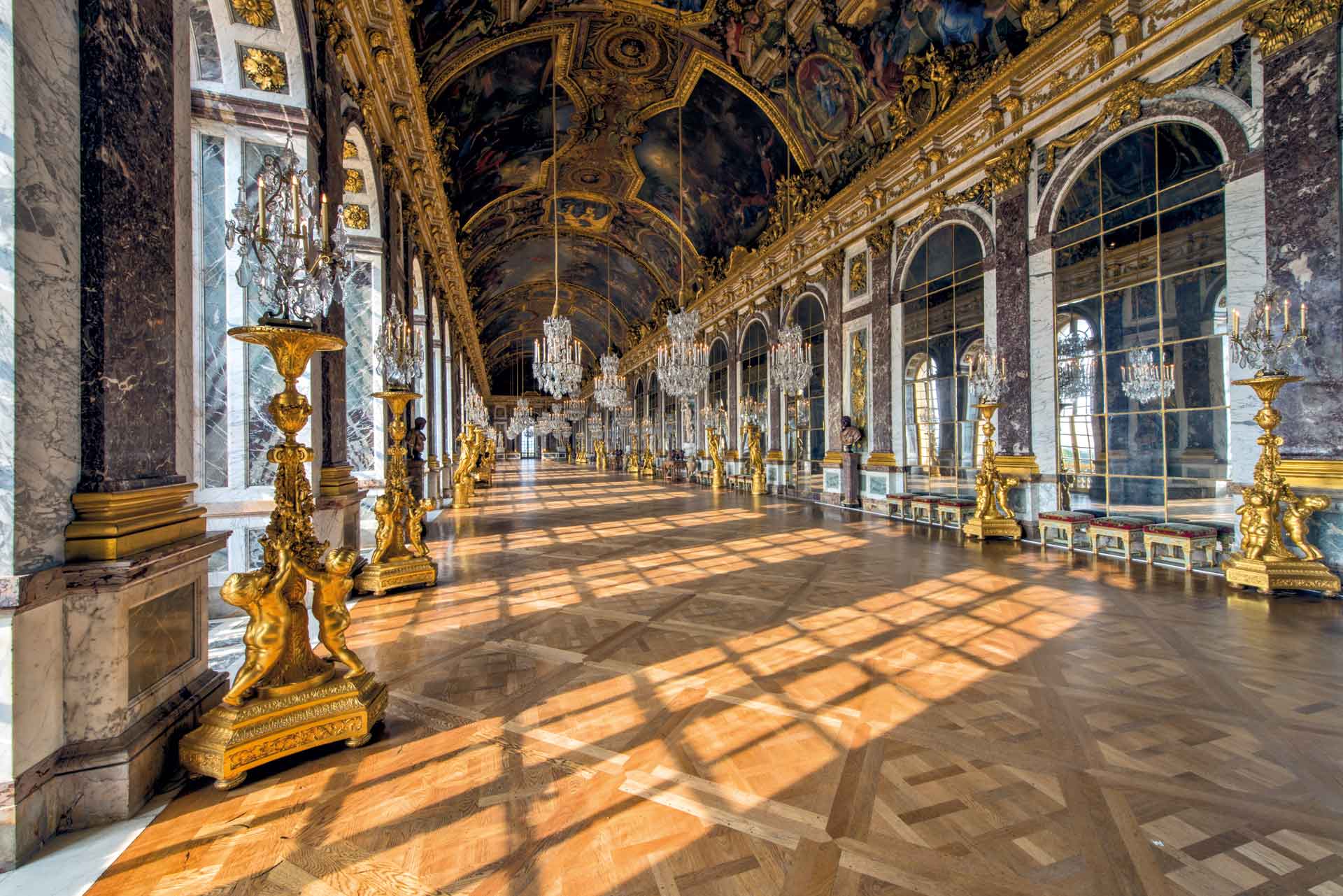
Apartment Of The Dauphin And The Dauphine
These apartments were always reserved to the leading members of the royal family. Their current decoration corresponds to the period in which they was occupied by Louis XV's son and his second wife, Maria Josepha of Saxony.
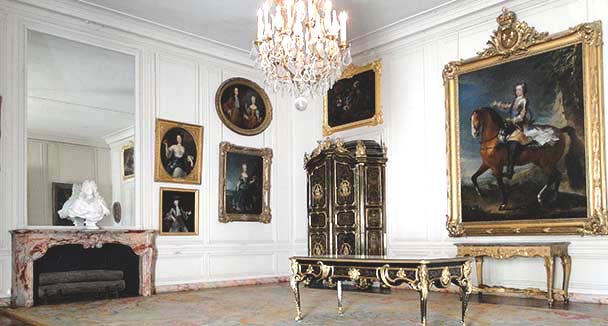
Gallery Of Battles
Built by architect Frédéric Nepveu in the nineteenth century, the Gallery of Battles was the first room commissioned by King Louis-Philippe for his museum of French history. The gallery was designed to represent his desire for national reconciliation, and presents a major series of historic paintings dedicated "to all the glories of France".
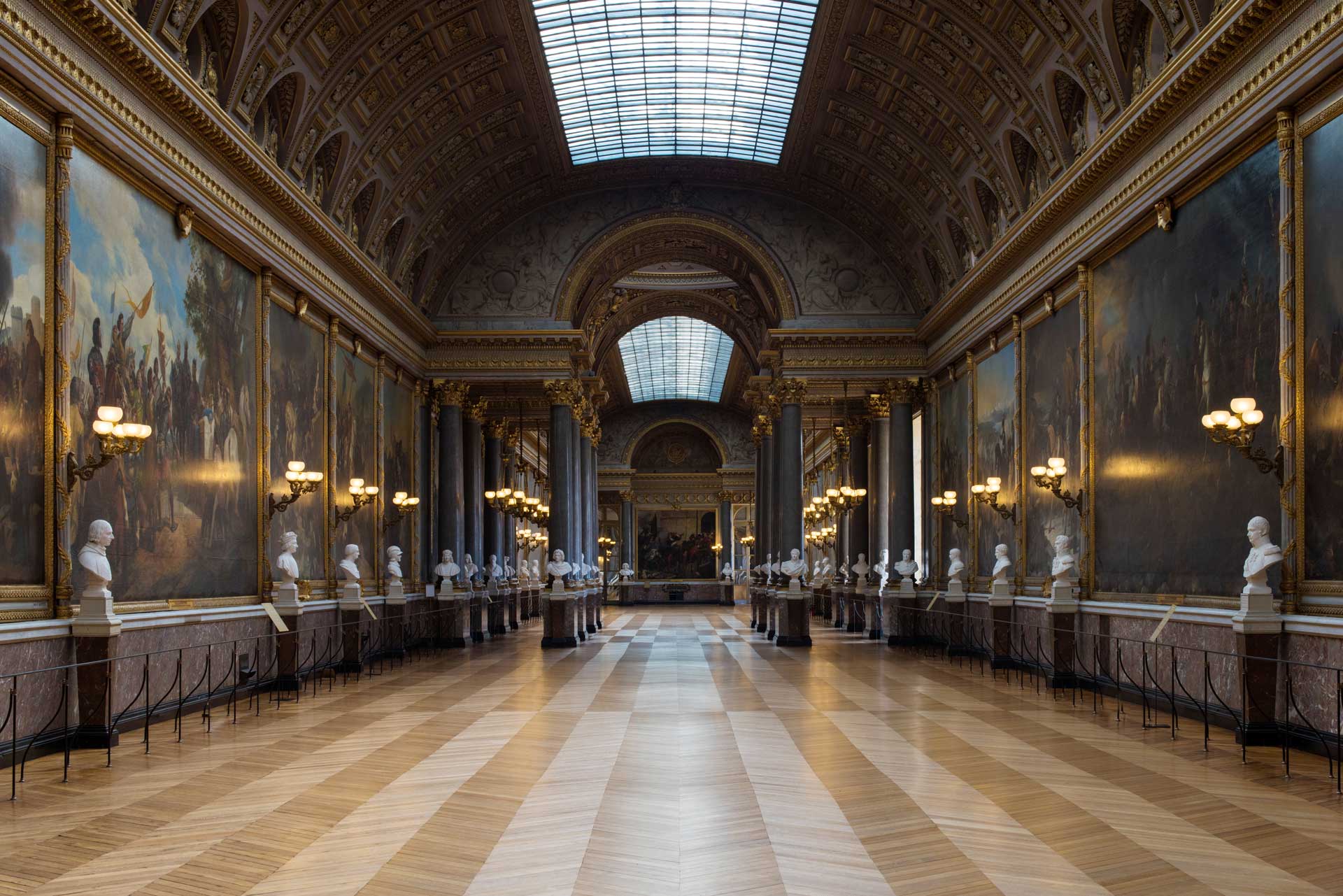
Apollo's Fountain
A fountain already existed here from 1636, under the reign of Louis XIII, known as the Swans Fountain. Louis XIV extended and decorated it with the impressive and celebrated group in gilded lead representing Apollo on his chariot. The work of Jean-Baptiste Tuby, from a drawing by Charles Le Brun, it is inspired by the legend of Apollo, god of the Sun and emblem of the King.
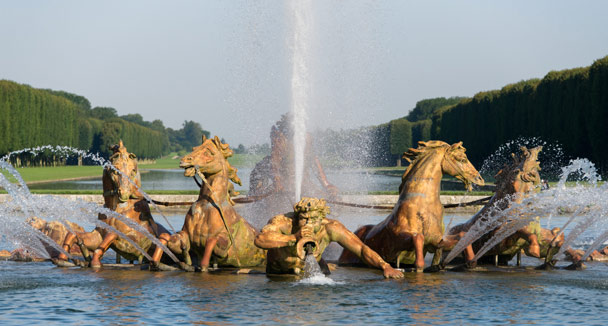
Great Lawn
Also known as the "Royal Walk", it gets its name from the expanse of grass that runs down the middle, the Great Lawn, that measures 335 metres in length and 40 metres in width. It was laid down under Louis XIII, but André Le Nôtre widened it and lined it with twelve statues and twelve vases, for the most part works sent by the Académie de France in Rome in the 17th century.
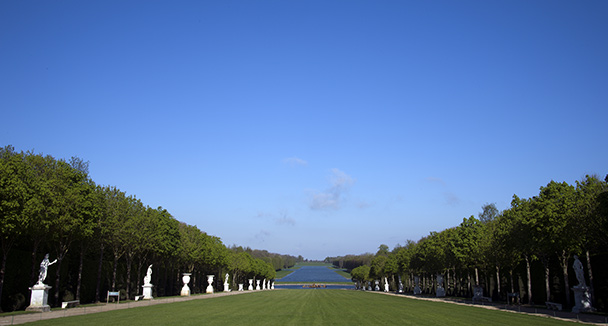
Mirror Pool
Louis XIV commissioned the Mirror Pool around 1702. Constructed opposite the King's Garden, the creation of the two dragon sculptures that frame the pool was entrusted to Jean Hardy. Covering three levels, it looks out onto five avenues and four statues inspired by antiquity, including the statue of Apollo.
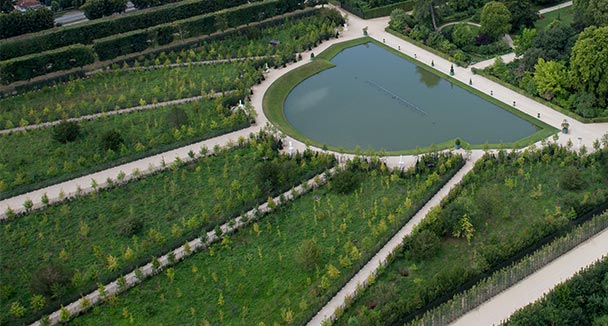
Queen's Hamlet
Marie-Antoinette, seeking to flee the Court of Versailles, ordered the construction of her hamlet in 1783. She regularly went there to experience the charms of country life, surrounded by her lady's companions. It became a genuine farm, managed by a farmer, whose produce supplied the kitchens of the Palace.
The workshops in the Hamlet can only be viewed from the exterior.
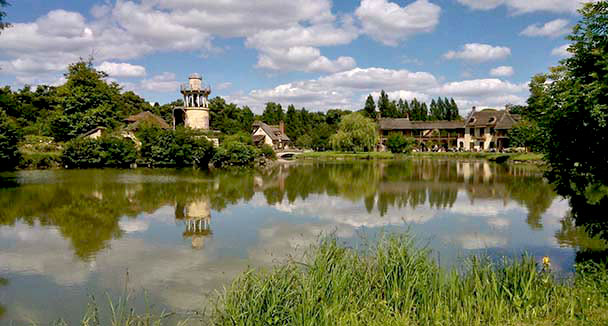
Water Theatre Grove
Landscape artist Louis Benech and artist Jean-Michel Othoniel have created a permanent contemporary artwork for Water Theatre Grove.
Open every day - Access only from the Neptune fountain and North Parterre side.
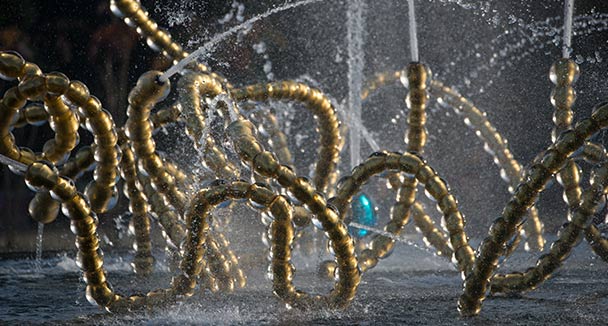
Louis Xiv Rooms ?
Louis XIV Rooms give visitors a vast panorama of the 17th century featuring the King, his family, the court and the major political, military and artistic events that marked his reign.
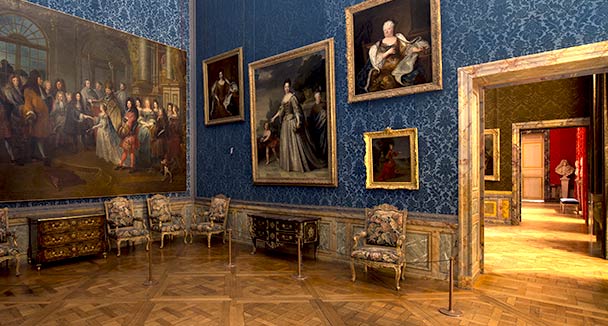
What is there to see at the Palace?
The Palace of Versailles, which has been on UNESCO’s World Heritage List for 30 years, is one of the most beautiful achievements of 18th-century French art. Discover the Hall of Mirrors, the Royal Chapel, the King and Queen's Grand Apartments...
Gallery Of The History Of The Palace
With the main Palace, the Trianon palaces, the gardens and the park, Versailles is a site whose topography and history are rich. Located at the beginning of the Grand Apartments tour, the Gallery of the History of the Palace is an essential introduction to the visit.
Under the Ancien Régime, these rooms were the apartments of the royal princes, before Louis-Philippe transformed them to present a brief history of France through works ranging from the Baptism of Clovis to Louis XVI giving La Pérouse his instructions.

The Mesdames’ Apartments, Daughters Of Louis Xv
The Mesdames' apartments are symmetrical to the apartments of the Dauphin and Dauphine. Like them, they were turned into museum rooms by Louis-Philippe and recently restored to their state of princely apartments. Mesdames, as the six daughters of Louis XV were referred to, settled there in 1752, but only two of them, Adelaide and Victoire, lived there until the Revolution.

Grand Apartments (Hall Of Mirrors, King’s Chamber)
Visitors arrive at the Grand Apartments through the Gallery of the History of the Palace or the sculpture gallery. By taking this tour, visitors can explore the apartments of the King and Queen of France.

Apartment Of The Dauphin And The Dauphine
These apartments were always reserved to the leading members of the royal family. Their current decoration corresponds to the period in which they was occupied by Louis XV's son and his second wife, Maria Josepha of Saxony.

Gallery Of Battles
Built by architect Frédéric Nepveu in the nineteenth century, the Gallery of Battles was the first room commissioned by King Louis-Philippe for his museum of French history. The gallery was designed to represent his desire for national reconciliation, and presents a major series of historic paintings dedicated "to all the glories of France".

Crusades Rooms
Louis-Philippe devoted a large area in the centre of the northern wing, on the town side, to the Crusades, replacing former courtiers' apartments. These five rooms can be accessed via the ground floor gallery in the northern wing.
Louis-Philippe created these rooms to honour the old noble families that took part in these expeditions in the Middle East.
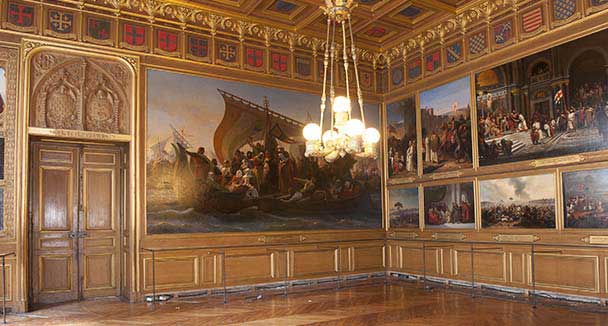
The Empire Rooms
As a contemporary of Napoleon I, King Louis-Philippe was eager to obtain the support of former members of the Empire and the favour of Bonapartist opinion. At Versailles, he gathered most of the large paintings commissioned by Napoleon in the ground floor of the Palace’s South Wing, under the Gallery of Great Battles.
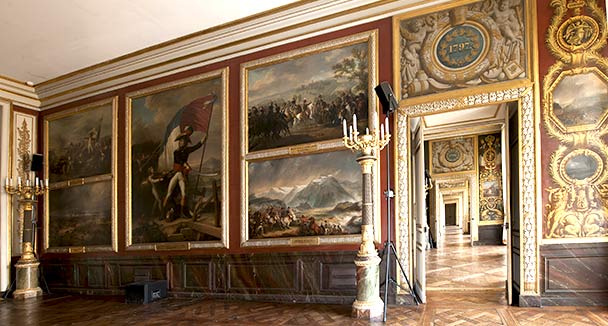
Louis Xiv Rooms ?
Louis XIV Rooms give visitors a vast panorama of the 17th century featuring the King, his family, the court and the major political, military and artistic events that marked his reign.

Don’t miss in the gardens
Visit André Le Nôtre's masterpieces. On Fountain Show and Musical Gardens days, you can visit certain groves that are usually closed.
Neptune Fountain
Construction of the Neptune Fountain took place between 1679 and 1681, under the supervision of Le Nôtre. At that time, it was referred to as the "water feature beneath the Dragon" or the "Pines feature". Ange-Jacques Gabriel modified the outlines slightly in 1736, and 1740 saw the sculpted decorations set in place. The new fountain, inaugurated by Louis XV, contains ninety nine water jets and effects.

Orangery Garden
At the foot of the Palace, the Orangery is one of the best examples of Jules Hardouin-Mansart's great talent as an architect, due to its size, its height and the purity of its alignments. Orange trees from Portugal, Spain and Italy and lemon and pomegranate trees. Some of the trees are over 200 years old. During winter, pink laurels and palm trees are kept there.
Visitors cannot enter the Orangerie without a guide.

Latona's Fountain
Taking its inspiration from Ovid's 'Metamorphoses', Latona's Fountain illustrates the legend of Latona, protecting her children Apollo and Diana. The central group was sculpted in marble by the Marsy brothers and represents Latona and her children. The statues were originally set on a rock, in 1670.
The jewel in the crown among the garden's fountains, discover the restored Latona fountain and parterres.

The Grand Canal
The Grand Canal is André Le Nôtre's most original design. Covering 23 hectares, 60m in width, 1700m east-west and 1000m north-south in length, the Grand Canal is one of the best places to take in the full beauty and grandeur of the estate as a whole. Laid out between 1668 and 1679, Louis XIV's architect took great care over the dimensions in order to offer the perfect perspective.

Apollo's Fountain
A fountain already existed here from 1636, under the reign of Louis XIII, known as the Swans Fountain. Louis XIV extended and decorated it with the impressive and celebrated group in gilded lead representing Apollo on his chariot. The work of Jean-Baptiste Tuby, from a drawing by Charles Le Brun, it is inspired by the legend of Apollo, god of the Sun and emblem of the King.

Great Lawn
Also known as the "Royal Walk", it gets its name from the expanse of grass that runs down the middle, the Great Lawn, that measures 335 metres in length and 40 metres in width. It was laid down under Louis XIII, but André Le Nôtre widened it and lined it with twelve statues and twelve vases, for the most part works sent by the Académie de France in Rome in the 17th century.

Mirror Pool
Louis XIV commissioned the Mirror Pool around 1702. Constructed opposite the King's Garden, the creation of the two dragon sculptures that frame the pool was entrusted to Jean Hardy. Covering three levels, it looks out onto five avenues and four statues inspired by antiquity, including the statue of Apollo.

Don’t miss at the Trianon
The Grand Trianon, the Petit Trianon and the Hamlet show the intimate side of Versailles. Marie-Antoinette loved to come here to find the pleasures of a simple, country lifestyle, far from the splendours of Versailles.
Petit Trianon
Madame de Pompadour, who wished to “relieve the king’s boredom”, was the instigator of this small palace built by Ange-Jacques Gabriel between 1763 and 1768, close to the botanical gardens and the new menagerie. To please the Marquise who was always at the height of fashion, the architect abandoned the "rocaille" style and adopted a cubist form with straight lines in accordance with the latest "Greek style" architectural trend.
Only the garden level of the Petit Trianon is accessible to disabled visitors.
Open from midday to 6.30pm during high season (April to October) and from midday to 5.30pm during low season (November to March). In July and August, it opens exceptionally at 10am from Tuesday to Sunday. Gardens open until 7.30pm during high season and until 6 during low season.

The Grand Trianon
The Grand Trianon is located 25 minutes' walk to the north west of the Palace of Versailles, built on the grounds of a village acquired by the sovereign. Unique in its original style of architecture, it was the work of Jules Hardouin-Mansart and the King himself, as Louis XIV was greatly involved in its creation in 1687. At that time, Versailles had been overrun by crowds of courtesans. The Trianon was intended as a private retreat.
Open from midday to 6.30pm during high season (April to October) and from midday to 5.30pm during low season (November to March). In July and August, it opens exceptionally at 10am from Tuesday to Sunday.Gardens open until 7.30pm during high season and until 6pm during low season.

Queen's Hamlet
Marie-Antoinette, seeking to flee the Court of Versailles, ordered the construction of her hamlet in 1783. She regularly went there to experience the charms of country life, surrounded by her lady's companions. It became a genuine farm, managed by a farmer, whose produce supplied the kitchens of the Palace.
The workshops in the Hamlet can only be viewed from the exterior.

Don’t miss in the city...
Here is a selection of remarkable places in the town that are dependent on the Palace or that are historically linked to Versailles.
Small Stables

The Coach Gallery
The Coach Gallery has been housed in one of the Main Stables galleries since 1985. There you can see the gala carriages commissioned for Napoleon's wedding, Louis XVIII's funeral carriage, Charles X's coronation carriage, other carriages from the 3rd Republic and sleds and sedan chairs from the 18th century.
Free access
From 1 April to 31 October:
Open on Saturdays, Sundays and public holidays (excluding Mondays) and from Tuesday to Sunday during zone C school holidays (from Tuesday 9 April to Sunday 21 April).
Opening times: 12.30pm - 6.30pm
Last admission: 5.45pm
From 2 July to 29 September, the gallery is open from Tuesday to Sunday, 9am to 6.30pm (last admission 5.45pm).
From 1 November to 31 March:
Open on Saturdays and Sundays
Opening times: 12.30pm - 5.30pm
Last admission: 4.45pm
Closed on 25 December 2024 and 1 January 2025

Sculpture And Plaster Cast Gallery
The gallery houses both the Louvre's plaster collection (a collection of castings taken from Antiquity) and marble sculptures from the garden of the Palace of Versailles, to protect them from the erosion they would be subject to if they were exhibited outdoors.
Access: Free
From 1 April to 31 October, the gallery is open every Saturday, Sunday and public holiday (except Mondays) from 12.30pm to 6.30pm (last admission 5.45pm).
From 2 July to 29th September, the gallery is open Tuesday to Sunday, 9 am. to 6.30 pm (last admission 5.45pm).
Closed from 1 November to 31 March.

The Great Stables

Versailles Academy Of Equestrian Arts.
Resumption of guided group tours from May 19th, resumption of shows from June 5th
Designed and created by Bartabas, founder of the Zingaro Equestrian Theatre, the Academy of Equestrian Arts opened in the Main Stables of the Palace of Versailles in 2003. Further information on performances.
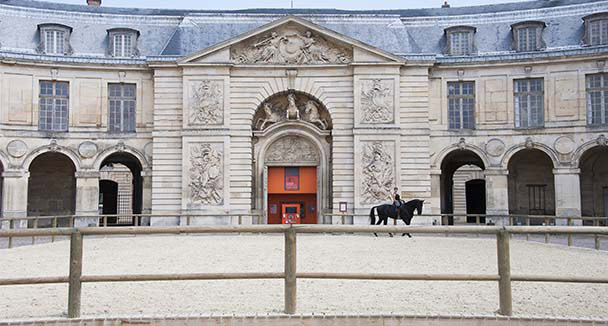
Grand Commun Buildings
"Le grand carré des Offices commun du Roi, de la Reine, de Monsieur le Dauphin et Madame la Dauphine", or Grand Commun was constructed by Jules Hardouin-Mansart between 1682 and 1686. This huge quadrilateral building of brick and stone was erected to house the staff who waited on the royal, princely and common tables.
The Grand Commun currently houses some of the institutional offices.
1 rue de l'indépendance américaine
78000 Versailles
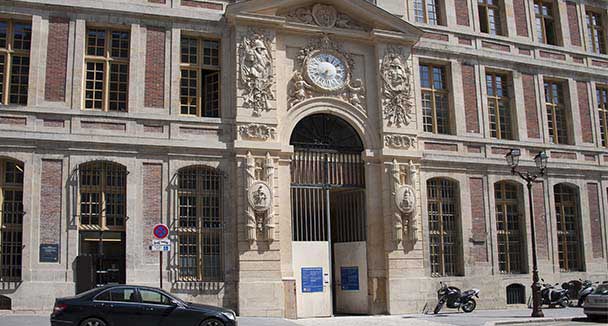
Pièce D'EAu Des Suisses
Intended to add beauty to the South aspect of the palace, as an extension of the Orangerie, it also allowed to dry up the land intended for the Potager du Roi (Kitchen Garden of the King) created at the same time.

Salle Du Jeu De Paume
The Jeu de Paume Room at Versailles was built in 1686 to satisfy the court ('jeu de paume' was a historic precursor of tennis). It was the venue for the Jeu de Paume Oath, taken on 20 June 1789.
It is open to the public every weekend from May to October from 12:30 to 18:30 (last access 17:45).

Cour Des Senteurs
Located just 100 m from the main entrance to the Palace of Versailles, the Cour des Senteurs is dedicated to the history of perfume. Free entry.
More information.
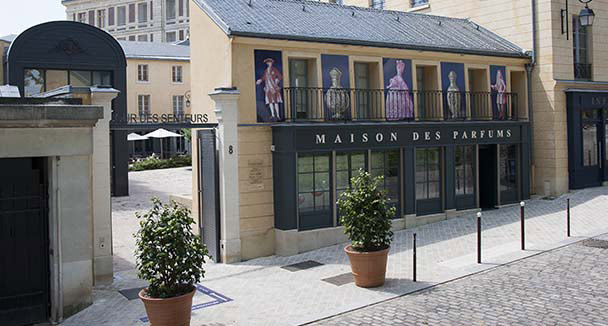
Potager Du Roi
The King's Vegetable Garden was built between 1678 and 1683 by Jean-Baptiste La Quintinie, on request from Louis XIV. Open to visitors, it also houses the National School of Landscape Architecture.
Classified as a historic monument and garden of exception, the gardeners maintain the tradition of topiary and cultivate a wide range of fruits and vegetables in this French style garden.

Arboretum De Chèvreloup
An integral part of the National Museum of Natural History, the Chèvreloup Arboretum houses several major live plant collections, covering 205 hectares at the north end of the Versailles state park.
The arboretum is accessible from the avenue Charles de Gaulle, in Le Chesnay, or on the D186 when travelling towards Versailles. Further information about the arboretum.
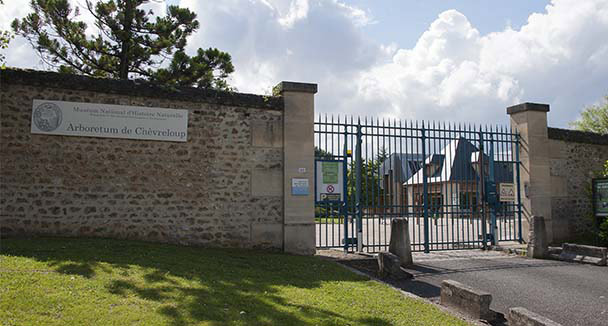
Madame Elisabeth’s Estate
Madame Elisabeth's Estate was built in the 1770s and was purchased by Louis XVI in 1783 for his sister, Madame Elisabeth. For further information.
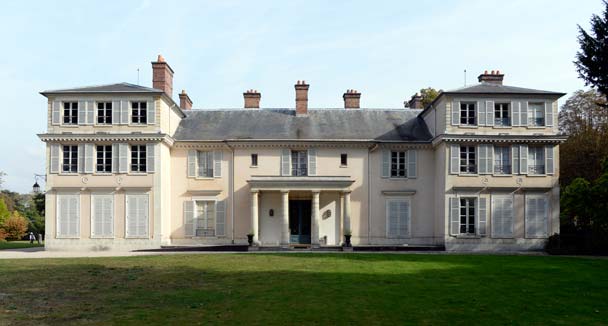
Saint-Louis Cathedral
Today the Cathedral of Versailles, this very beautiful baroque church in the Saint-Louis quarter received the procession opening the Estates General and the first signatories of the Tennis Court Oath.
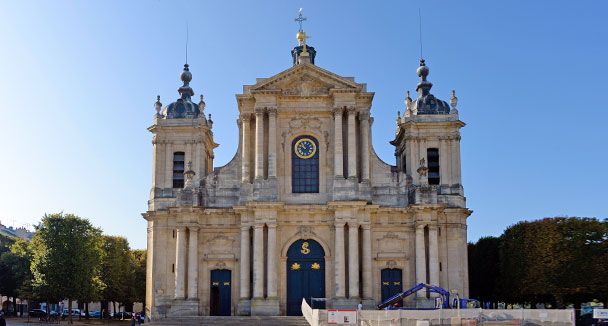
Carrées Saint-Louis
This unit of "constructions" organized in "squares" was originally designed for market stalls under Louis XV, before being turned into residences. This singular urban unit is unique in France.
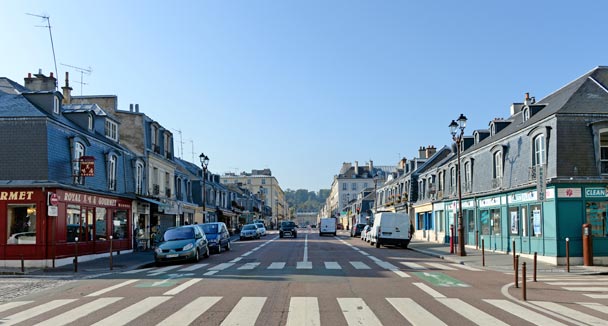
Notre Dame Market
In the same location since the 17th century, Notre Dame Market is Île-de-France's second largest.
Opening hours : tuesday, friday & sunday morning (7am to 2pm)
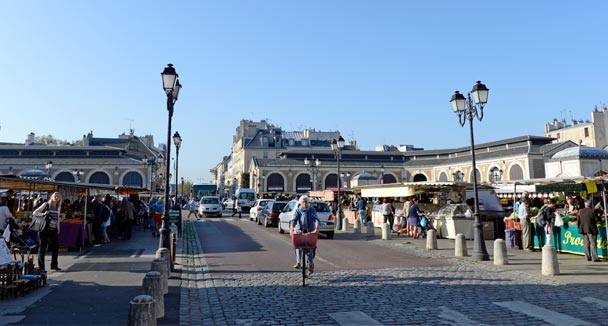
Balbi Park
Representative of 18th century English gardens, Balbi park is the former botanical garden collecting rare tree species belonging to the Comte de Provence. The futur King Louis XVIII wished to "see the world in his garden".
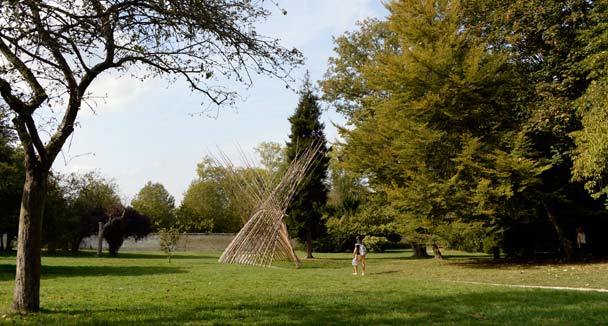
Menus Plaisirs Hotel
Famous for the first French National Assembly having been held here, it was also here that the Declaration of the Rights of Man was voted into existence. Since 1996 it has been home to the Centre de Musique Baroque. More information.
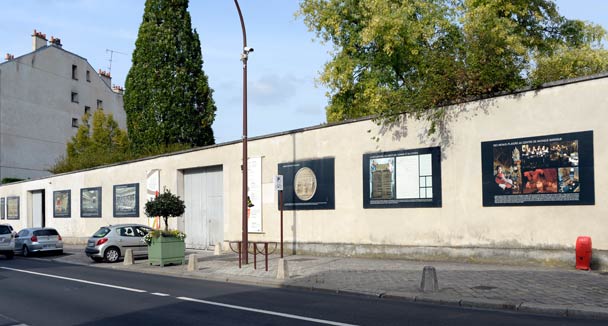
Théâtre Montansier
One of the oldest institutions of Italian theatre in France, it was inaugurated in 1777 in the presence of Louis XVI ans Marie Antoinette. More information.
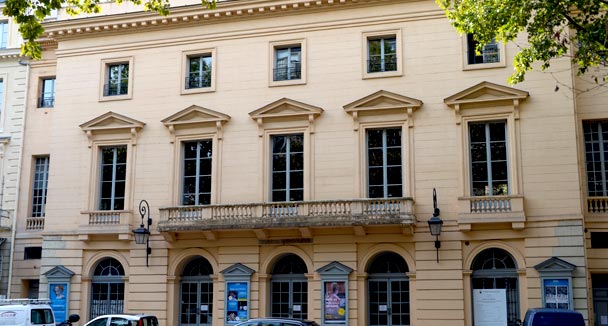
Lambinet Museum
Built under Louis XV, this townhouse contains the Versailles city museum; its collection includes a grat many books and documents on the royal old town's history, 18th century life and the Right of Man.
Open hours : from monday to sunday from 2pm to 6pm, except fridays and Bank-Holidays
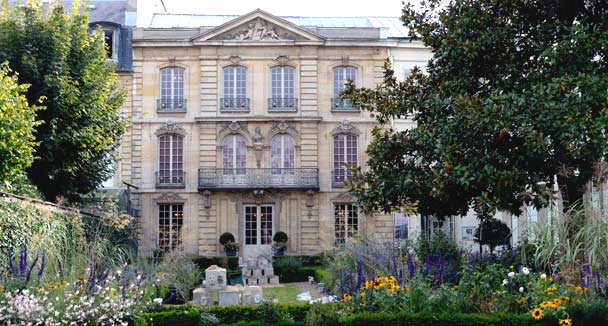
Notre-Dame Church
The Notre-Dame Church, wich was built by Jules Hardoin Mansart and inaugurated by Louis XIV in 1684, was the setting for all royal liturgical events. The king had his place in the choir, and we find many historical objects there, such as the silk banner offered by Pope Pius VI or the cenotaph of Vergennes, a minister of Louis XVI, who signed the treaty of American independence in 1738.
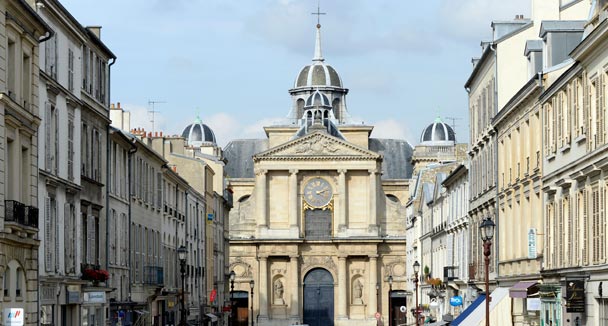
What can you see in the Small and Large Stables?
The Great and Small Stables, commissioned by Louis XIV and built by Jules Hardouin-Mansart, testify to the importance of horses during the Ancien Régime. The names of the two buildings refer not to their size, but to their purpose.
In the Great Stables, you can visit the Coach Gallery and enjoy equestrian shows.
In the Small Stables, you can visit the Sculptures and Mouldings Gallery.
Small Stables

The Coach Gallery
The Coach Gallery has been housed in one of the Main Stables galleries since 1985. There you can see the gala carriages commissioned for Napoleon's wedding, Louis XVIII's funeral carriage, Charles X's coronation carriage, other carriages from the 3rd Republic and sleds and sedan chairs from the 18th century.
Free access
From 1 April to 31 October:
Open on Saturdays, Sundays and public holidays (excluding Mondays) and from Tuesday to Sunday during zone C school holidays (from Tuesday 9 April to Sunday 21 April).
Opening times: 12.30pm - 6.30pm
Last admission: 5.45pm
From 2 July to 29 September, the gallery is open from Tuesday to Sunday, 9am to 6.30pm (last admission 5.45pm).
From 1 November to 31 March:
Open on Saturdays and Sundays
Opening times: 12.30pm - 5.30pm
Last admission: 4.45pm
Closed on 25 December 2024 and 1 January 2025

Sculpture And Plaster Cast Gallery
The gallery houses both the Louvre's plaster collection (a collection of castings taken from Antiquity) and marble sculptures from the garden of the Palace of Versailles, to protect them from the erosion they would be subject to if they were exhibited outdoors.
Access: Free
From 1 April to 31 October, the gallery is open every Saturday, Sunday and public holiday (except Mondays) from 12.30pm to 6.30pm (last admission 5.45pm).
From 2 July to 29th September, the gallery is open Tuesday to Sunday, 9 am. to 6.30 pm (last admission 5.45pm).
Closed from 1 November to 31 March.

The Great Stables






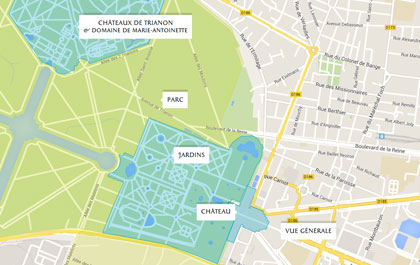
 Optimized for tablets and smartphones
Optimized for tablets and smartphones
